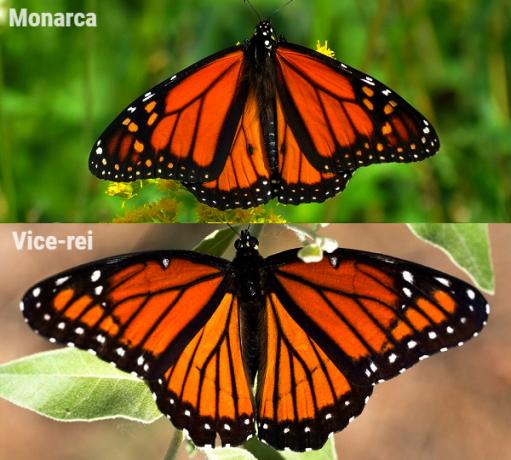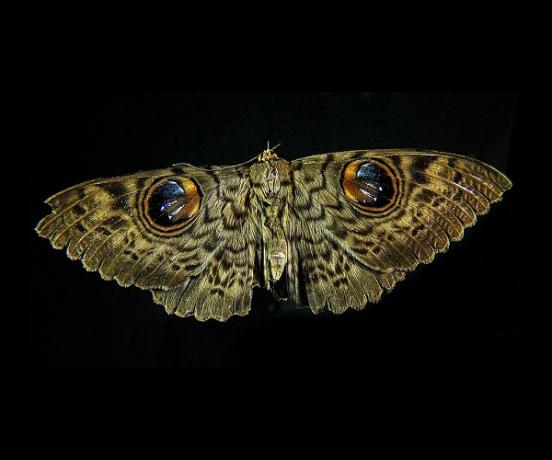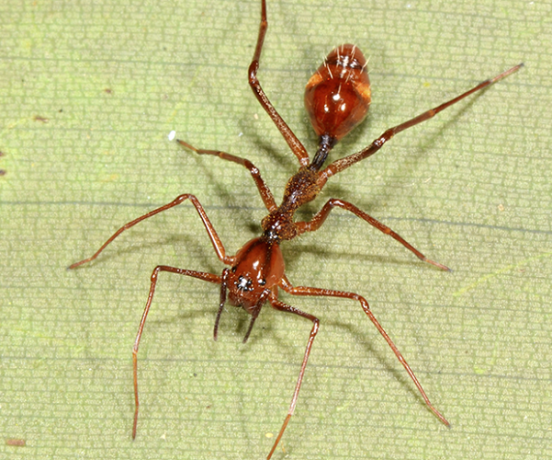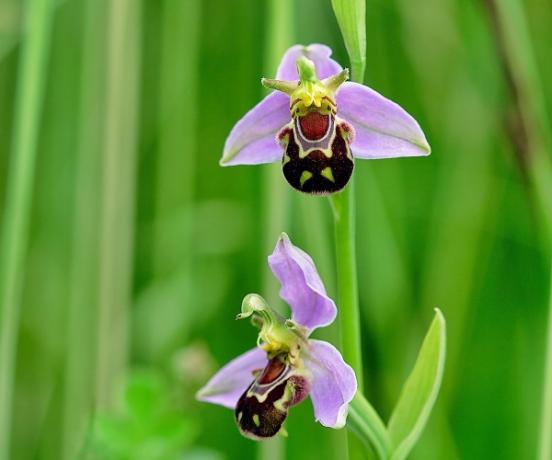Mimicry is the ability to adaptation of animals and plants, which mimic characteristics of similar species.
The animal that imitates the characteristics is called an imitator or mimetic, and the imitated animal is the model.
In mimicry, animals that are not poisonous (and pose no less danger to their predators) mimic the characteristics of poisonous animals to protect themselves from attack. In doing so, they follow a pattern that is understood by predators as a warning of danger and this can save their lives.
Mimicry can happen in many ways, imitators can copy physical or behavioral characteristics of other animals, or plants. The imitation of colors, patterns, textures and smells are examples of mimicry.
Butterflies, owls, insects, octopuses, snakes, spiders, flies, moths and grasshoppers are some mimetic species.
What are the types of mimicry?
There are two types of mimicry: Batesian and Müllerian.
Batesian mimicry
In Batesian mimicry, a harmless (non-poisonous) animal mimics the characteristics of another similar animal that is more dangerous. Butterflies, flies and bees are examples of animals that mimic the Batesian.
In this mimetic type, the animal copies some physical (morphological) characteristics of the dangerous animal. By doing this, it is more likely to defend itself from a predator's attack.
Batesian mimicry is frequent in palatable (edible) animals, which mimic unpalatable animals (which are unpleasant to the predator) as a protection strategy. Therefore, the predator's perception of the victim (whether it is palatable or not) is also important for the success of this survival strategy.
 The case of monarch and viceroy butterflies is one of the best known examples of Batesian mimicry. They belong to different families and the viceroy (palatable) copies characteristics of the monarch (unpalatable) to protect herself.
The case of monarch and viceroy butterflies is one of the best known examples of Batesian mimicry. They belong to different families and the viceroy (palatable) copies characteristics of the monarch (unpalatable) to protect herself.
Batesian mimicry was discovered in the 19th century by the English researcher Henry Walter Bates (1825-1892).
He recognized this protection mechanism during a study trip in Brazil, when he was researching typical species from the Amazon. Bates studied the behavior of butterflies in detail.
Mullerian mimicry
In Müllerian mimicry, two species (or more) mimic traits to protect themselves from other predators. In that case, all species must be unpalatable (not pleasant when eaten).
In this kind of mimicry, the similarity between the species gives a danger signal to the predator, so that it stays away and does not attack. In addition to structural similarities, animals can also mimic the colors or smells of their models.
Müllerian mimicry was observed by the German botanist and professor Johann Fritz Müller (1822-1897). He lived in Brazil for over ten years.
 True (poisonous) coral and false (non-poisonous) coral are very similar and confuse predators and victims.
True (poisonous) coral and false (non-poisonous) coral are very similar and confuse predators and victims.
Müllerian mimicry is linked to natural selection, as over the years, imitating species naturally acquire the characteristics of the model species.
THE Evolution Theory (Evolutionism), created by researcher Charles Darwin (1809-1882) benefited from Fritz Müller's discoveries about mimicry. The two researchers exchanged information about their research.
Learn more about Evolutionism.
What is the function of mimicry?
Animals mimic three different functions: to defend themselves, to attack prey or to ensure reproduction and mating.
defensive mimicry
It is the mimicry used as protection strategy. Animals adopt characteristics (physical and behavioral) that make the prey avoid an attack.
Batesian and Müllerian mimicry are examples of defense mimicry.
 The moth that mimics an owl's eyes to ward off predators is an example of defensive mimicry.
The moth that mimics an owl's eyes to ward off predators is an example of defensive mimicry.
attack mimicry
Attack (or aggressive) mimicry is used by animals to attack possible prey. In this case, unlike what happens in defense mimicry, the imitating animal is the predator.
To deceive their prey, these animals (which are not toxic or poisonous) can copy characteristics of a more dangerous animal.
An example is ant predator spiders. They are able to mimic ant characteristics to get close and attack them.
 This spider looks a lot like an ant. Therefore, it can approach more easily to make the boat (Image: Goeldi Museum).
This spider looks a lot like an ant. Therefore, it can approach more easily to make the boat (Image: Goeldi Museum).
reproductive mimicry
this kind of mimicry guarantees reproduction of many species. It's not just animals that perform reproductive mimicry, there are plants that also have this ability.
Some species of orchid, for example, are able to mimic the shape and smell of bees. With this, they are able to attract a drone to distribute their pollen and increase the species' reproduction.
 The similarity of the orchid-bee to the female of a bee deceives the drone and guarantees the flower's pollination.
The similarity of the orchid-bee to the female of a bee deceives the drone and guarantees the flower's pollination.
What's the difference between mimicry and camouflage?
The two mechanisms are used by animals as a means of protection and attack, but they are quite different.
At the mimicry, the mimetic copies the characteristics of other animals, to defend itself or attack prey.
already in camouflage, animals do not imitate other beings. They just disguise themselves in their own environment, with the aim of hiding to protect themselves from an attack. They can disguise themselves in green leaves, tree branches and even in the ground.
But camouflage is not only a defense strategy for these animals, it can also be an attack tactic. When they're camouflaged in the wild, it's easier to capture the victim.
The chameleon is one of the best known examples of camouflage, but many other animals also have this ability, such as the praying mantis, leafworm, octopus, some reptiles, owl, seahorse, dry leaf butterfly and the stick insect.
 The stick insect is an insect that lives among vegetation and can easily be mistaken for a branch or tree trunk.
The stick insect is an insect that lives among vegetation and can easily be mistaken for a branch or tree trunk.


